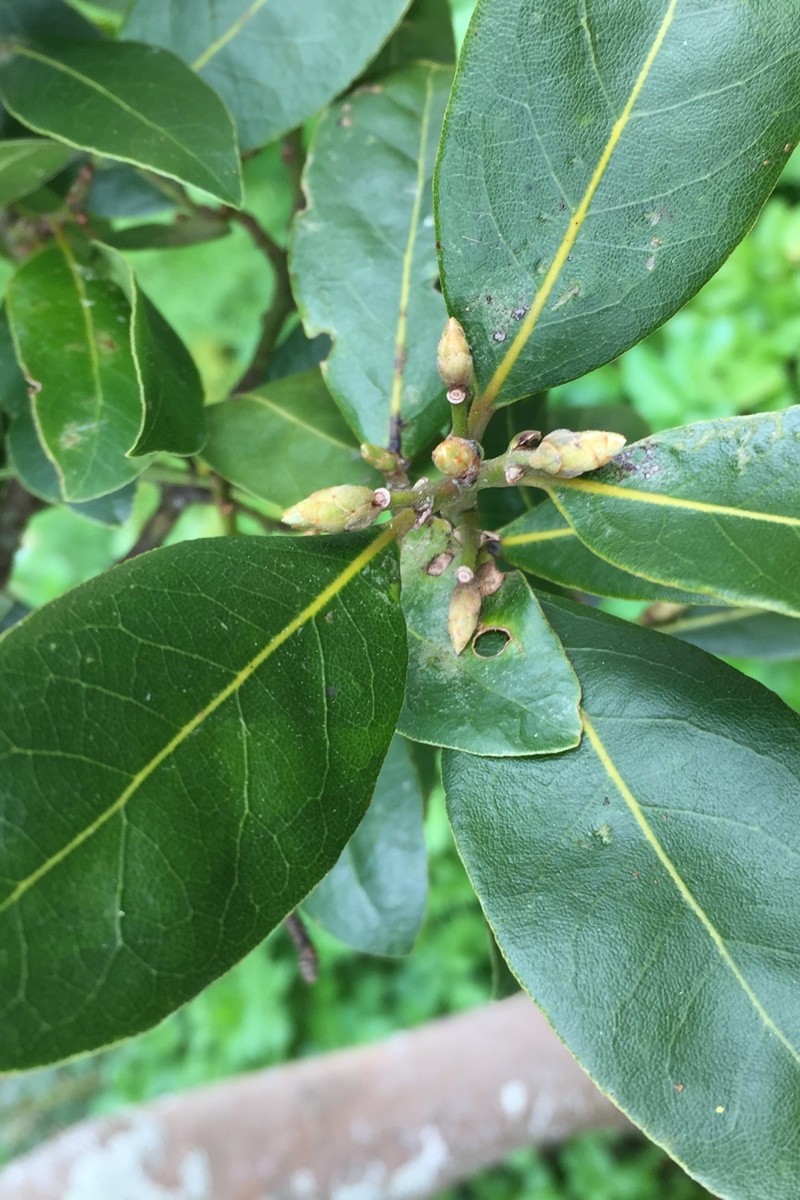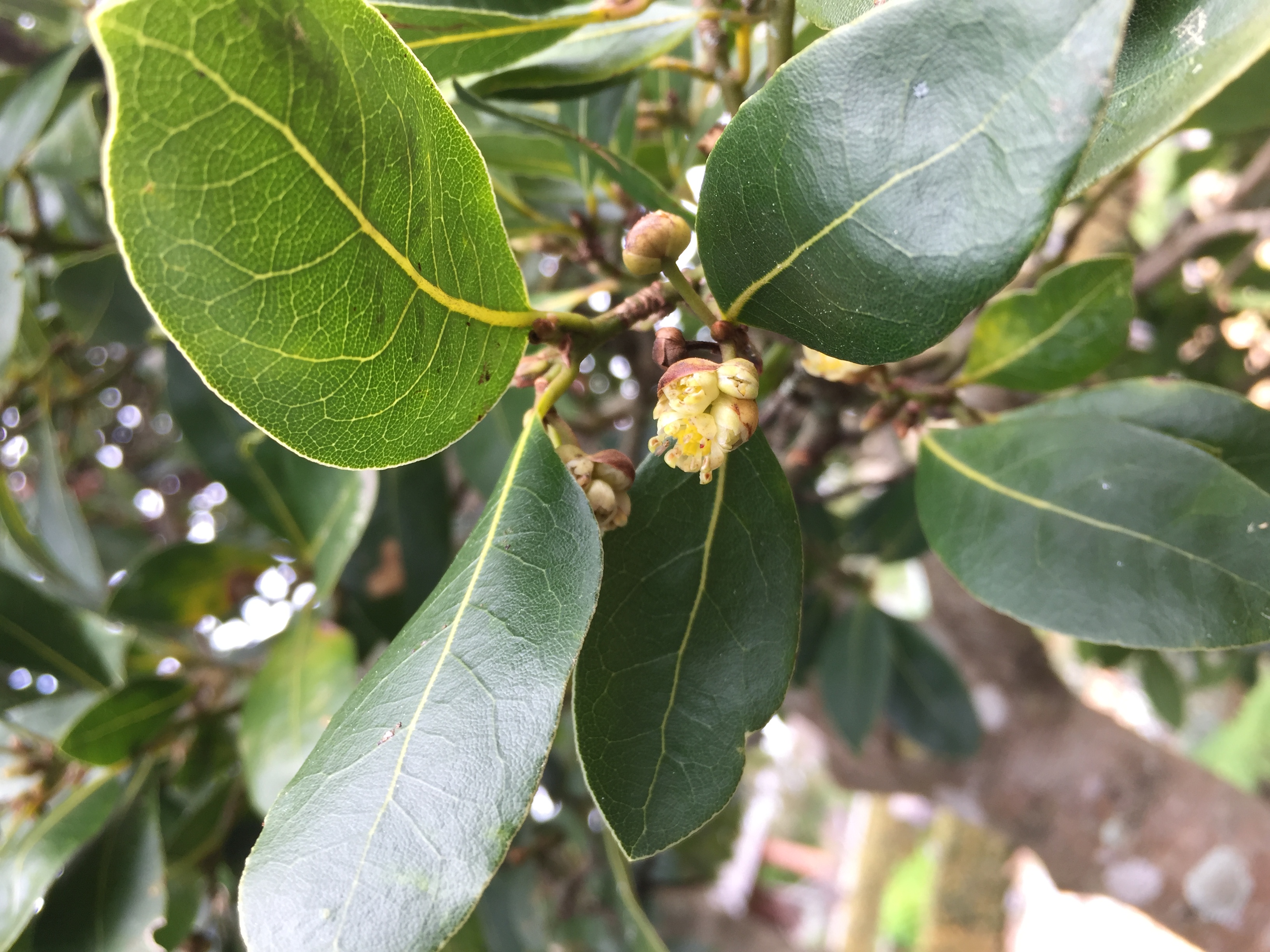Physical characteristics
Flowers and foliage
In spring small clusters of
Preferred site
Needs well-drained soil and a shelte
Preparation for planting
Always choose healthy well grown
Planting success is often improved on clay soils by adding extra topsoil and raising beds. Incorporate coarse sand, bark, compost or other organic material to improve soil structure. Before planting ensure the root ball is saturated and remove the planter bag or pot with minimal root disturbance. Trim any broken roots and plant at the same level as in the container. Dig a hole twice the diameter of the root ball and firm in and water once planted. Make sure
T
If growing in a container, ensure the base of the container is raised off the ground by using pot feet (or bricks) to allow excess water to drain away and help prevent frost cracking the pot.
Maintenance tips
Apply mulch
Pruning depends on whether you want topiary or are simply growing it as a shrub or small tree in the ground. Topiary trained bay are trimmed with secateurs during summer to encourage a dense habit and to maintain a balanced shape.
Check stakes and ties for chafing and constriction and remove as soon as
Pests and diseases
Leaf spots are often caused by waterlogged roots or
Location at Auckland Botanic Gardens
Herb Garden
Interesting facts and tips
In ancient Greece leaves of this tree were woven into wreaths to crown the victors of various contests. This tree was one of the main components along with the common holly (Ilex aquifolium) of extensive prehistoric laurel forests that cove
The name for the genus comes from the ancient name for the plant and the specific epithet is the Latin word for "noble" or "famous". This plant was introduced into cultivation in Britain at least as early as 1650 and received the Royal Horticultural Society Award of Garden Merit in 1993.




.jpg?width=1200&height=1200&v=1d4024dceb89e50)

.jpg?width=1200&height=1200&v=1d5569224d63650)
 .jpg?width=1200&height=1200&v=1d4024df6ce2770)
.jpg?width=1200&height=1200&v=1d55676a892f2b0)
 .jpg?width=1200&height=1200&v=1d4024e3b65f7f0)